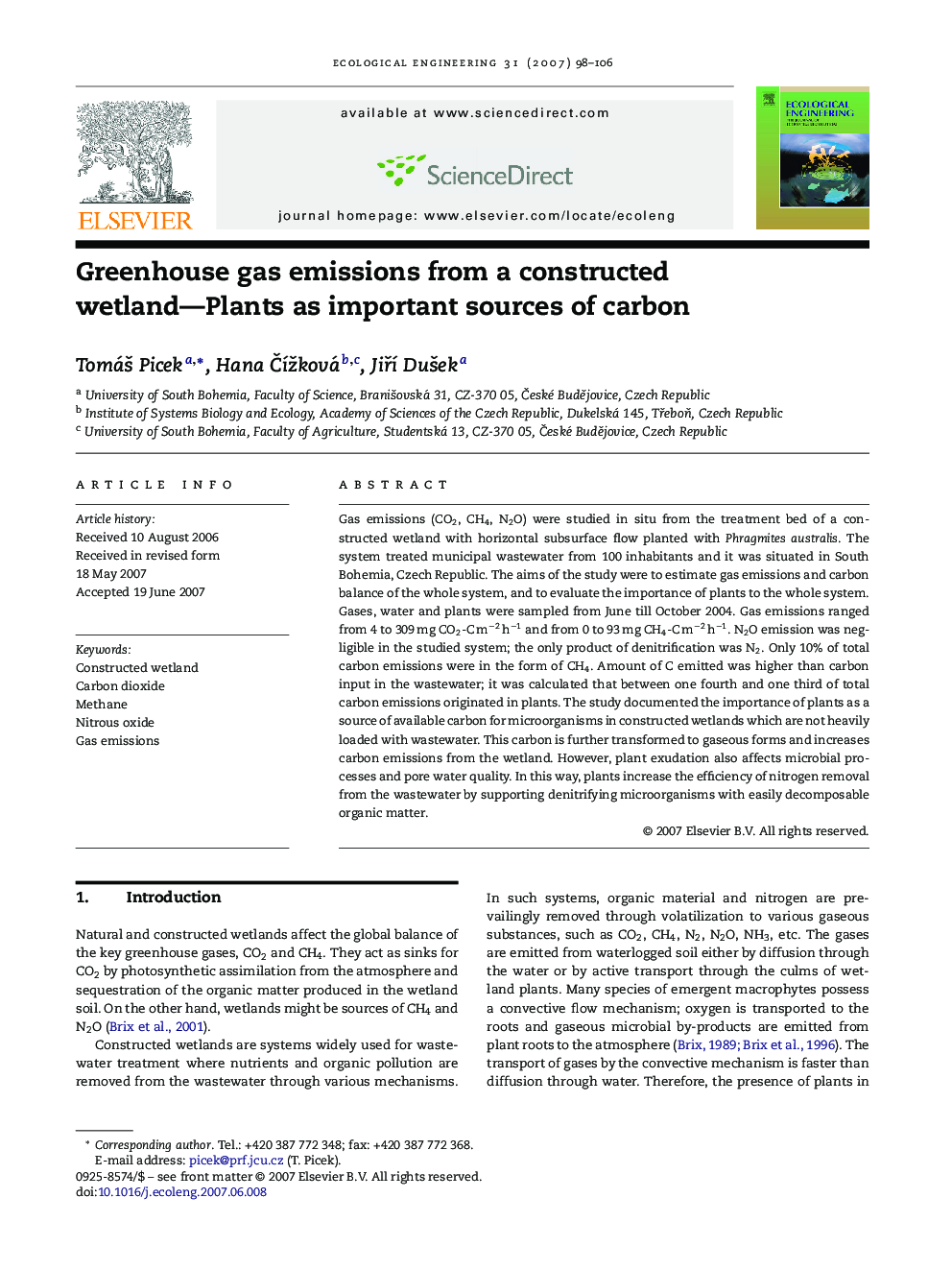| Article ID | Journal | Published Year | Pages | File Type |
|---|---|---|---|---|
| 4390804 | Ecological Engineering | 2007 | 9 Pages |
Gas emissions (CO2, CH4, N2O) were studied in situ from the treatment bed of a constructed wetland with horizontal subsurface flow planted with Phragmites australis. The system treated municipal wastewater from 100 inhabitants and it was situated in South Bohemia, Czech Republic. The aims of the study were to estimate gas emissions and carbon balance of the whole system, and to evaluate the importance of plants to the whole system. Gases, water and plants were sampled from June till October 2004. Gas emissions ranged from 4 to 309 mg CO2-C m−2 h−1 and from 0 to 93 mg CH4-C m−2 h−1. N2O emission was negligible in the studied system; the only product of denitrification was N2. Only 10% of total carbon emissions were in the form of CH4. Amount of C emitted was higher than carbon input in the wastewater; it was calculated that between one fourth and one third of total carbon emissions originated in plants. The study documented the importance of plants as a source of available carbon for microorganisms in constructed wetlands which are not heavily loaded with wastewater. This carbon is further transformed to gaseous forms and increases carbon emissions from the wetland. However, plant exudation also affects microbial processes and pore water quality. In this way, plants increase the efficiency of nitrogen removal from the wastewater by supporting denitrifying microorganisms with easily decomposable organic matter.
